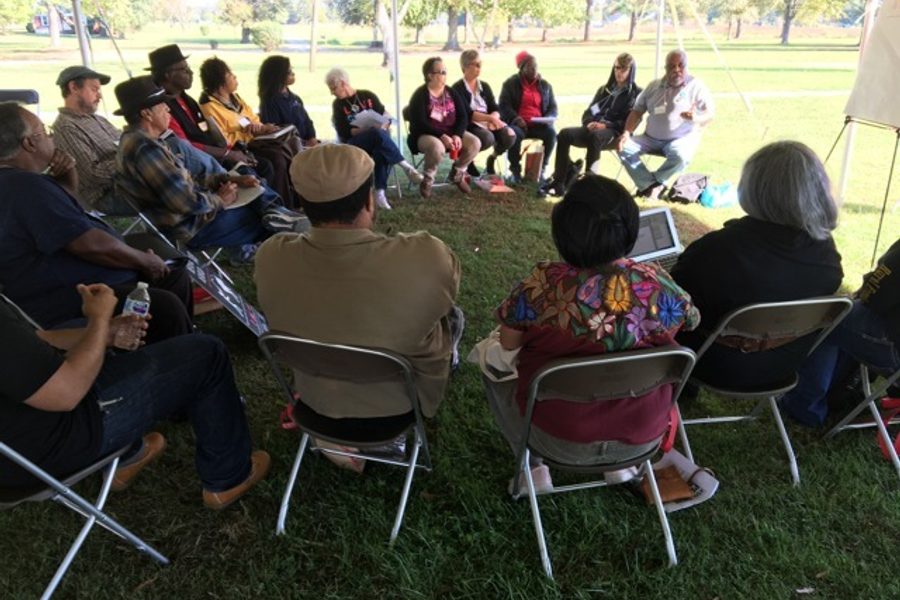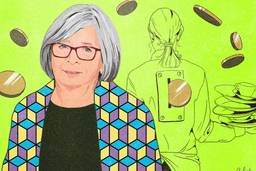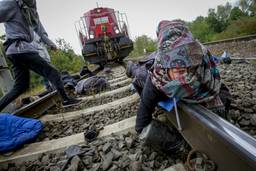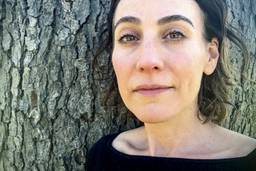What the South Can Teach the Rest of the Country About Resisting the Right
A conversation with organizers of the Southern Movement Assembly, a convergence of bottom-up organizations rooted in Black struggle.
Sarah Jaffe

Welcome to Interviews for Resistance. We’re now several months into the Trump administration, and activists have scored some important victories in those months. Yet there is always more to be done, and for many people, the question of where to focus and how to help remains. In this series, we talk with organizers, agitators, and educators about how to resist and build a better world.
Libby Devlin: I am Libby Devlin. I am the southern region director for National Nurses Organizing Committee/National Nurses United. I am on the governing council of the Southern Movement Assembly, and I am on the coordinating committee for the Southern Workers Assembly which runs the Southern Workers School.
Saladin Muhammad: I’m Saladin Muhammad, retired international rep for the United Electrical Workers union, founding member of the Black Workers for Justice and co-coordinator of the Southern Movement Assembly.
Rita Valenti: I am Rita Valenti. I am a registered nurse. I work with National Nurses Organizing Committee. I’m on the Board of Healthcare-NOW! I am a Project South founder.
Sarah Jaffe: We are talking a little while after the Southern Movement Assembly happened. Tell our readers what that was.
Saladin: It is a convergence of organizations and grassroots organizations that are largely anchored in the African-American grassroots struggles in all of the states in the South. It is aimed at building a sense of strategy and program in people’s understanding of the Southern freedom movement.
Sarah: Tell us a little bit about the history of the Movement Assembly; how long this has been going on, and why did you come together?
Rita: This is the seventh Southern Movement Assembly. Our first one was in 2012 in Lowndes County, Alabama. Each Movement Assembly has built on the one before it and has developed a sense of principles. People work together and practice consciousness, vision and strategy. Ultimately, we are trying to build power from the bottom up and end oppression and exploitation of our people in the South.
Libby: There are around 20 organizations that participate in the Southern Movement Assembly. We have all agreed to a blueprint, which is the Southern People’s Initiative. This includes working to build a new economy, to establish more of a people’s democracy and to protect and defend each other within that democracy.
Sarah: Let’s talk about how this past assembly went. Was it at all different now that Trump is president, or are you still focused on the same things that were happening before?
Saladin: We have a long-term perspective regardless of who is president. Obviously, the Trump presidency has some influence on how we think about the long-term perspective, because it certainly is a part of the long-term perspective of the elite class and the direction of the system. We felt that it is important that people have a perspective so that we don’t just panic because of this open facilitation of white supremacy and white nationalism. So, building on the past assembly informed us on the road ahead. It has had some influence, but it didn’t disrupt perspective.
Sarah: Some of the southern organizers I have talked to recently have said, “We have already been struggling with people who are a lot like Trump.”
Tell us a little bit about what happened at this assembly. What were some of the sessions like? Who was there? What were some of the conversations that people were having?
Rita: There were about 300 people there. That showed a deep commitment. To get to Whitaker, North Carolina, you can’t just land in an airport someplace. You actually have to be engaged and really committed to building this work.
Essentially, it was a series of frontline assemblies. One engaged a National Student Bill of Rights. Another assembly dealt with mass incarceration and de-incarcerating the assemblies. There was one on climate change, one on people’s democracy. And then there was the assembly that I, Libby, Saladin and a lot of other folks put together: The Workers Justice Assembly. There was an assembly on migration and one on economies for survival. Plus, there were a number of skill building assemblies that dealt with strategy and tactic, as well as vision.
It was a beautiful space. In a lot of ways, it created a harm-free liberation zone where people felt very comfortable sharing their views and really trying to come together to develop political strategy.
Libby: I know Black Workers for Justice has been involved in the past, and I think this is the third assembly that the NNU has participated in. But this particular assembly had, I think, more focus on the idea of workplace democracy and building worker organizations as a way to expand democracy and protect and defend each other. There was a little bit more attention to the idea that we need to have a worker-based movement if we intend to really do anything about income inequality and the lack of democracy in our country.
Sarah: On that note, why don’t we talk a little bit about the Workers Justice Assembly.
Saladin: The Workers Justice Assembly represented a new entity, or — as described in the Southern Movement Assembly — a new frontline. That is, a new battlefront, a new issue struggle.
The Workers Assembly provided an experience that has been a little different from other frontline assemblies. We involved participants in a practice that trade union organizing does: meeting other people, asking them where they work, asking them about what issues they face where they work, etc. Then, we went out to some real workplaces to leaflet, talk to workers and report back that experience, to have a sense of some of the things that workplace organizing entails. I think that was a new experience and a new practice.
Libby: Obviously a lot of the unions have a real vested interested in having strong alliances with community organizations. The nurses are natural allies with our patients and community. It is important for the unions to be involved in the Southern Movement Assembly, because it engages unions and community organizations together. The unions bring something important to this relationship in that we, as unions, are the ones who directly confront capital every day at work. Many of the community organizations engage in really important organizing, but they don’t necessarily have an automatic relationship via their union to directly confront some of the economic systems that are particularly exploitative and unfair to people.
So, we bring that alliance together to figure out, “Where do these community organizers themselves work, and are they interested in participating in a broader economic struggle for economic justice?”
Rita: I was very, very excited about the presence of some of the key unions that have an understanding of social unionism, which brings together the workplace and community issues and sees those things interconnected. This is opposed to a more elitist business unionism model that tends to collaborate with the boss.
The other thing that I think also came out of this is this is a focus on the gig economy. We talked about what a lot of young workers are facing in terms of internships and contracting and some of the real problems that young workers face in an economy that is constantly changing and has been developing in a way that unpaid labor and lack of benefits are the norm for so many young workers.
How does this collaboration between unionism and grassroots organizing actually begin to challenge power and transform our society in ways that address the current situation? In our assembly we had nurses, we had retired workers, we had representatives from UE and NNU, as well as a lot of workers who are working in 501©3s and struggling to bring together their work experience with their desire to transform this country.
Libby: We also had some online journalists as part of the Workers Justice Assembly. This was before Ricketts closed down his business rather than deal with unions. I don’t know if I would call online journalists part of the gig economy, but it certainly is precarious work. How are we going to approach the precarious work to be able to have people take power? What do we learn from that, and how do we build on that and figure out what the next and proper steps are?
Saladin: For me, the Southern Movement Assembly raises the issue of how a movement has to deal with contradictions that emerge out of organizing in a changing economy and also in a changing political reality. We have to ask whether or not the differences that exist should be viewed as antagonistic within the movement, or a learning curve that the movement has to understand in order to be able to move forward collectively.
We learned that even in liberated spaces, sometimes there will be differences that a movement has to try to navigate and work out. Understanding challenges in the course of carrying out a strategy and a program is something that I think the assembly helped us to learn.
Sarah: One of the challenges that several places have faced this year has been hurricanes and looking forward into a world of climate change. I wonder how much you guys talked about these storms and what being ready for the next ones would look like.
Rita: I think one of the leaps that has occurred in the Southern Movement Assembly process was Southern Movement Assembly 5, Gulf South Rising. That marked the tenth anniversary of Hurricane Katrina and the aftermath of Katrina, including the huge amount of privatization that went along on New Orleans. So, what is it that we have to do in terms of building leverage and power? One of the reasons I love this movement assembly process is because it is beginning to address that.
Also, NNU started the RN-to-RN program with Katrina that brought nurses into the Gulf after Katrina and has also sent nurses into Puerto Rico. Not from the perspective of colonizers, but from the perspective of, “What is on the ground and how do we assist with that?” Part of the bringing unions — progressive unions — into the Movement Assembly is the building of capacity and organization. The other question that comes out of the Southern Movement Assembly process is, “What is the nature of the organization we have to build to win?”
Saladin: Hurricane Katrina, for many of us, brought forward the beginning understanding of disaster capitalism. That is an important aspect of our understanding about the question of climate change and the role of the state, the failures of the state.
There are so many conferences that take on similar, not identical, characters as the Southern Movement Assembly. But, the difference between the Southern Movement Assembly and a conference and workshops is that it is part of an ongoing process of forging and building a movement with a consciousness that is local, national and international. To really see how those features are forged is a way to look at the experience of the Southern Movement Assembly and its annual convergence.
Sarah: What are a couple of the lessons from this past assembly and from the work of doing these assemblies more broadly that people from outside the South should take?
Libby: I guess I always kind of hoped that the standards in the northern states would move South, not vice versa. So, when you look at income inequality, it is worse in the South. Health outcomes are worse in the South. Education quality is worse in the South. Infant mortality rates are worse in the South. The percent of unionization is directly linked to all of that, as well.
What we bring from the South is that we have been living under these same conditions that the existing government and their funders would like to see brought throughout the country. We have existed. We have survived. We can say we have done that. I think a lot of people in places like Michigan, Wisconsin, Illinois, Indiana and Missouri are all going to be faced with the same conditions that we have now. I know that they are working to try to figure out, “How do you fight back in that environment?” Because the political climate has been different there. One thing that people can learn from us is how to be scrappier. How you fight in that context. There has been a lot of cross-state discussion that has been going on, and I think that is helpful and useful.
Saladin: Historically, the labor movement has not recognized the strategic role of the South in a national strategy. The south is a zone of global capital very much like the maquiladoras. International capital is now seeing it as a region of concentration that is protected by a state that is dominant internationally. Economists have said that the regional economy of the South would be considered as the world’s fourth largest economy, following Japan. If we are not recognizing this concentration of global capital in the South and understanding how to challenge the outrageous actions of U.S. and global capital, then I don’t think we are looking at a strategy correctly.
When Wisconsin happened and the issue of Right to Work was raised, it appeared as if the sky had fallen. We have been living under Right to Work, and it never sounds like the sky is falling for the South. It’s almost as if that is normal for us. In terms of so-called de-industrialization and the Rust Belt, I don’t think that we have a good handle outside of the South on understanding what that is going to mean for the labor movement in terms of the shrinkage. Again, I think you can look at the South almost as a kind of internal colony, if you will, in terms of how capital has used it in reorganizing itself. I think that is something that the northern forces have to get a better handle on.
Interviews for Resistance is a project of Sarah Jaffe, with assistance from Laura Feuillebois and support from the Nation Institute. It is also available as a podcast on iTunes. Not to be reprinted without permission.

I hope you found this article important. Before you leave, I want to ask you to consider supporting our work with a donation. In These Times needs readers like you to help sustain our mission. We don’t depend on—or want—corporate advertising or deep-pocketed billionaires to fund our journalism. We’re supported by you, the reader, so we can focus on covering the issues that matter most to the progressive movement without fear or compromise.
Our work isn’t hidden behind a paywall because of people like you who support our journalism. We want to keep it that way. If you value the work we do and the movements we cover, please consider donating to In These Times.
Sarah Jaffe is a Type Media Center Fellow, co-host (with Michelle Chen) of Dissent magazine’s Belabored podcast, and a columnist at The Progressive. She was formerly a staff writer at In These Times and the labor editor at AlterNet. Her previous books are Work Won’t Love You Back: How Devotion to Our Jobs Keeps Us Exploited, Exhausted and Alone and Necessary Trouble: Americans in Revolt, which Robin D.G. Kelley called “The most compelling social and political portrait of our age.” You can follow her on Twitter @sarahljaffe.







